- Home
- About us
- Press Releases
- Projects
- SIIM
- Security Incident Information Management (SIIM) (EN)
- Security Incident Information Management (SIIM) FR
- Security Incident Information Management (SIIM) (ES)
- Security Incident Information Management (SIIM) AR
- SIIM in NGO Security Collaboration
- Toolkit: Evidence that Protects Health Care
- Support for Advocacy
- Mobile Guides and Podcasts
- Mobile guides on security
- Research partnership
- Concept development
- Information
- Country Pages
Myanmar
Since 1 February 2021, Myanmar’s State Administrative Council has violently targeted doctors and teachers for taking a leading role in the nationwide Civil Disobedience Movement (CDM). Increased conflict in border areas has also seriously affected living conditions and aid access.
Hospital occupied by Myanmar military attacked by resistance forces
28 March 2024: In Myaing town and township, Pakokku district, Magway region, a township hospital, an immigration office, and a military checkpoint occupied by the Myanmar military were attacked with small firearms by the local resistance forces. The immigration office and some buildings in the hospital compound were torched by the local resistance forces. The hospital […] more
Previous stories:
Analysis

Myanmar
20 March-02 April 2024
Attacks on Health Care
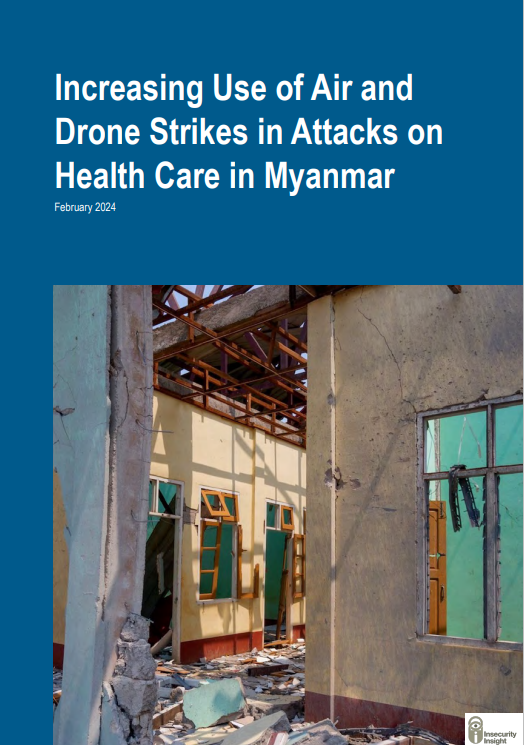
Increasing Use of Air and Drone Strikes
Attacks on Health Care in Myanmar
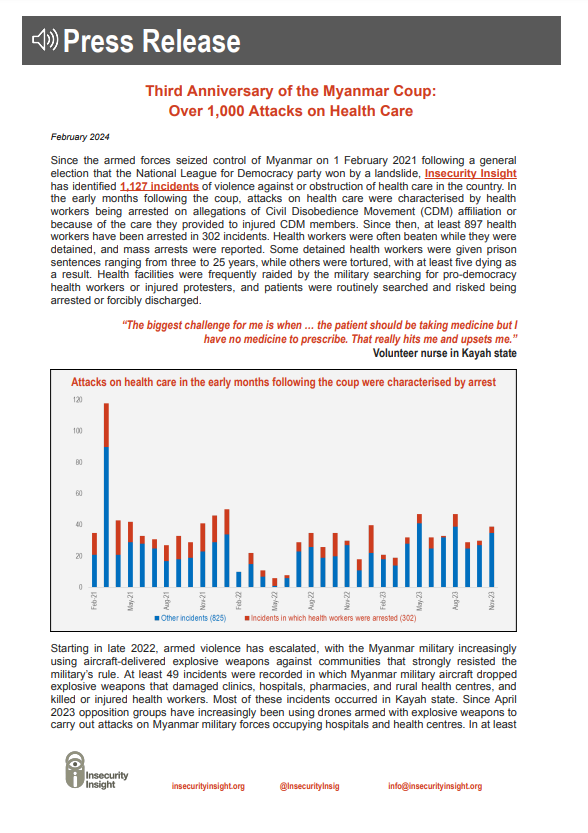
Third Anniversary of the Myanmar Coup
Press Release
February 2024

Myanmar: A Tragic Milestone
November 2023
Press Release
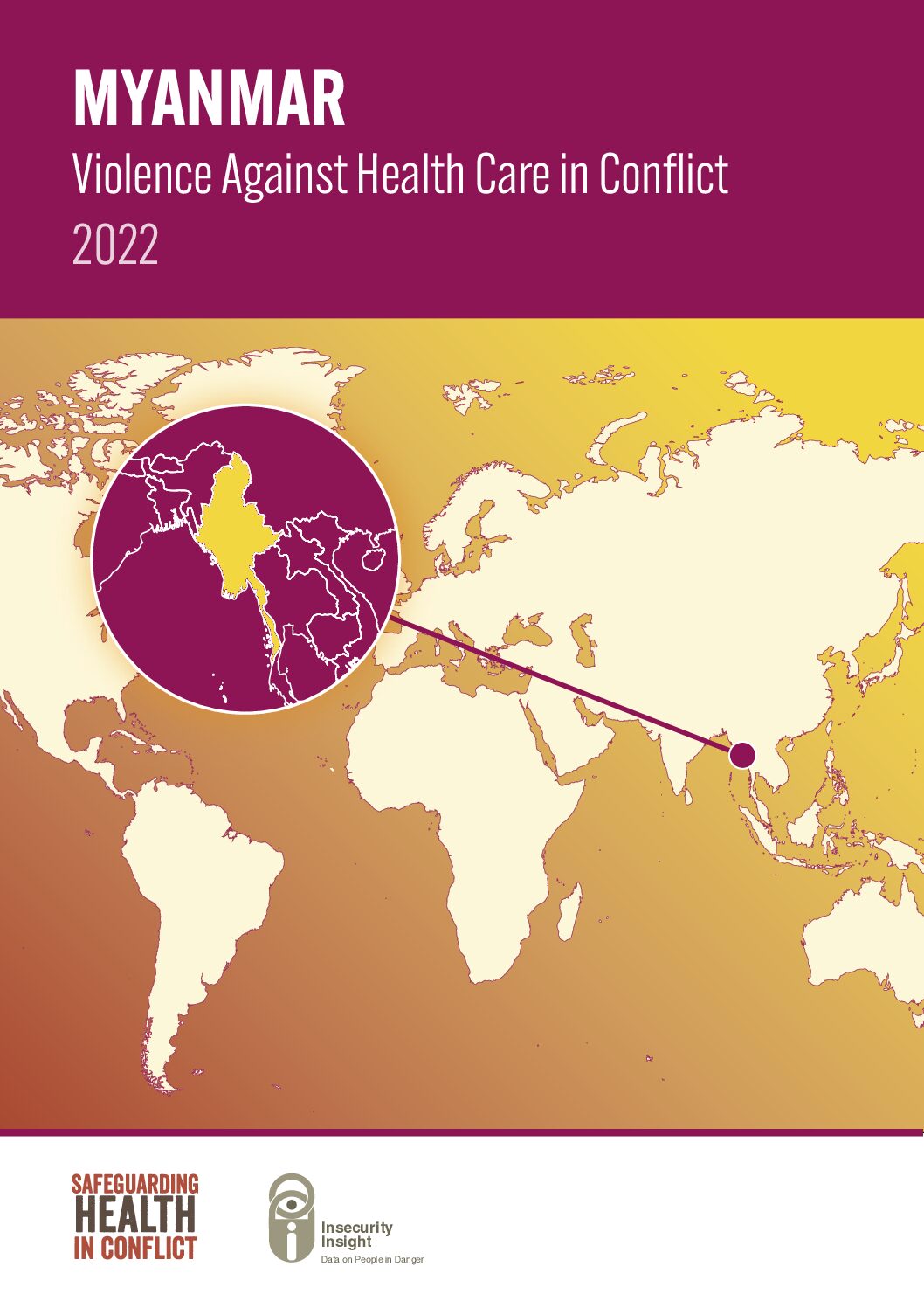
Myanmar
May 2023
SHCC 2022 Factsheet
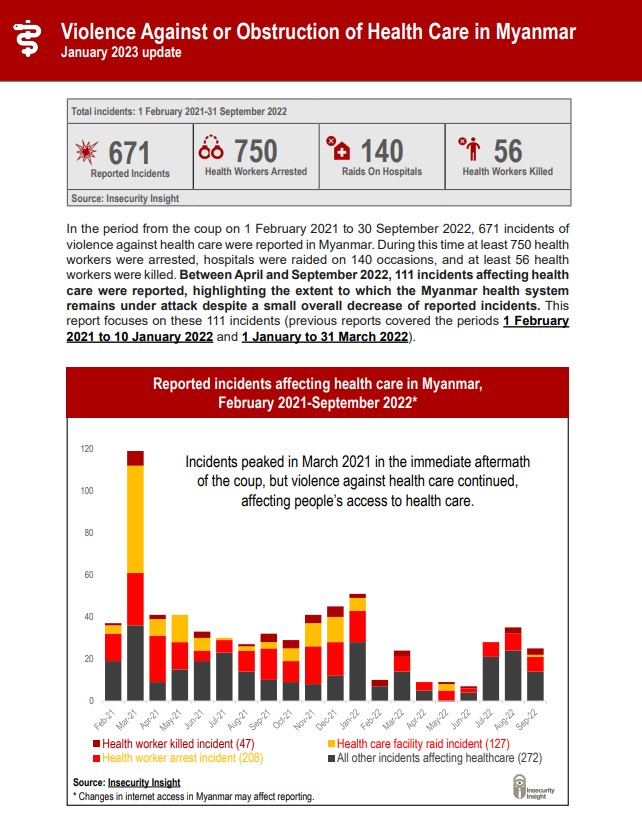
Myanmar
January 2023
Attacks on Health Care
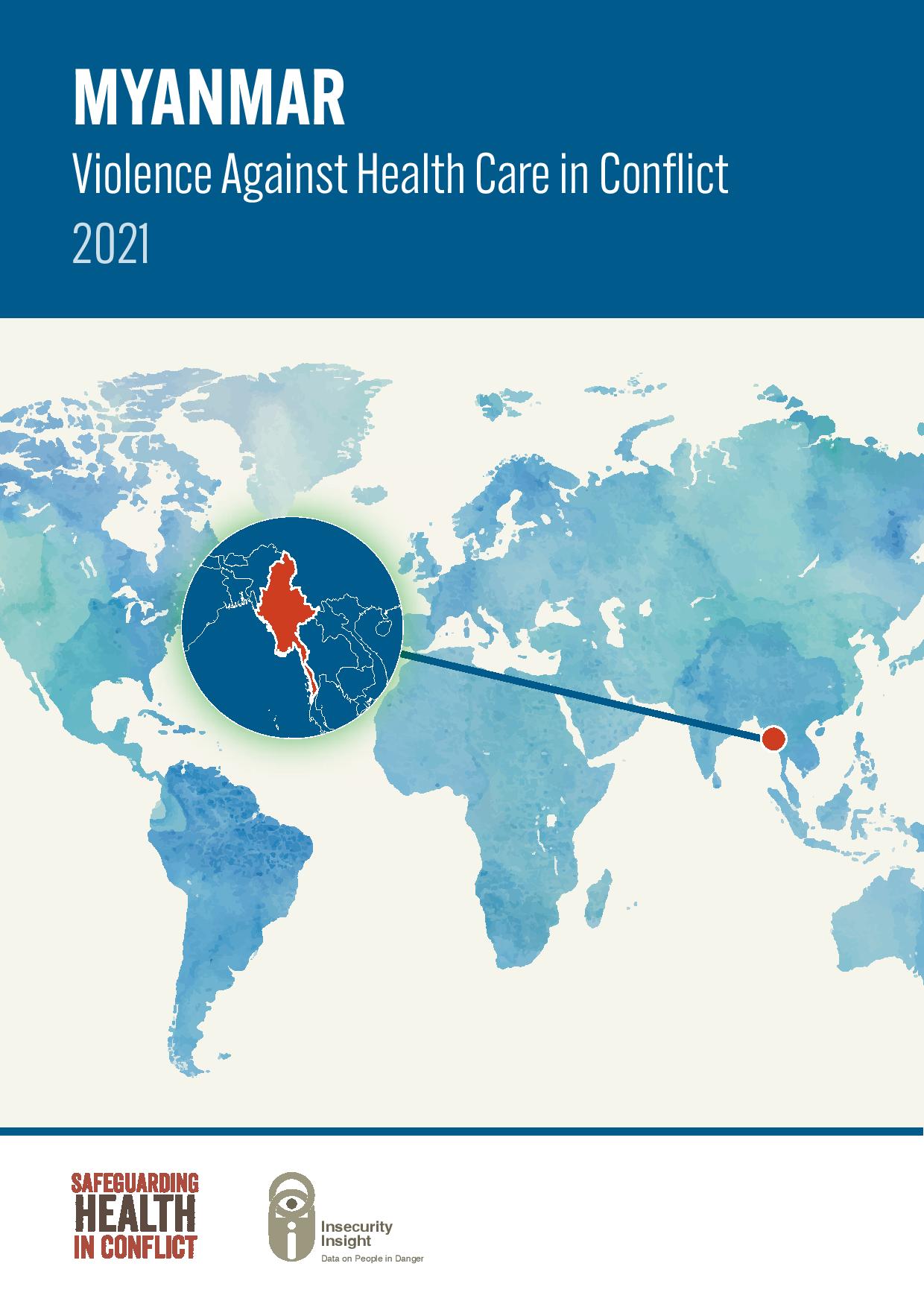
Myanmar
May 2022
2021 SHCC Factsheet
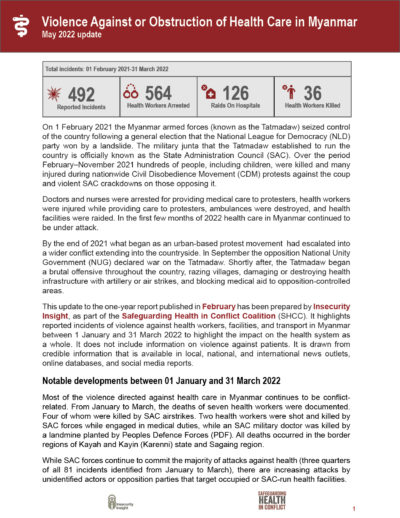
Myanmar
May 2022 update
Attacks on Health Care

Myanmar
January 2022 Update
Attacks on Health Care
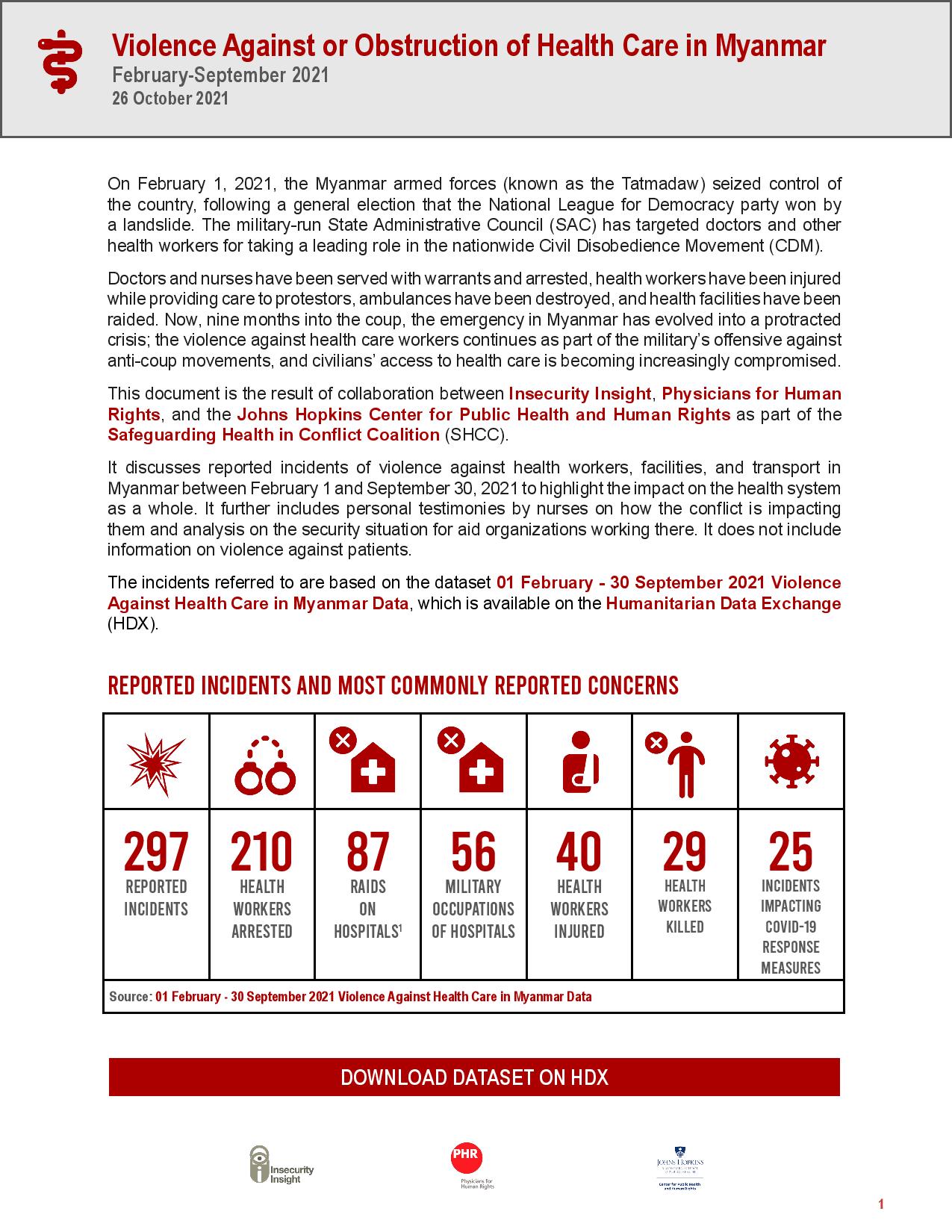
Myanmar
Attacks on Health Care
October 2021 Update
Health Care
Violence and obstruction against health care has occurred throughout the country since the beginning of the 2021 coup.
Hospitals have been raided and occupied and ambulances shot at. Health workers have been arrested, injured, and in some cases killed in close-range shootings. They have also been prevented from treating wounded protesters and emergency medical teams have been shot at with live rounds while trying to retrieve or treat injured civilians. Insecurity Insight monitors such attacks. Our data is available to download here.
2022 Safeguarding Health in Conflict Coalition (SHCC) Factsheet
Based on Insecurity Insight data, the SHCC identified 271 incidents of violence against or obstruction of access to health care in Myanmar in 2022, compared to 474 in 2021. In these incidents, 112 health workers were arrested and 27 were killed. Additionally, health facilities were damaged or destroyed on at least 46 occasions and raided 32 times. A total of 103 incidents were related to the ongoing political protests following the February 2021 military coup. The full chapter is accessible here.
Explore our Attacked and Threatened: Health Care at Risk interactive global map to see incidents where health workers were killed, kidnapped or injured and incidents where health facilities were damaged or destroyed since 2016.
Incident Reports
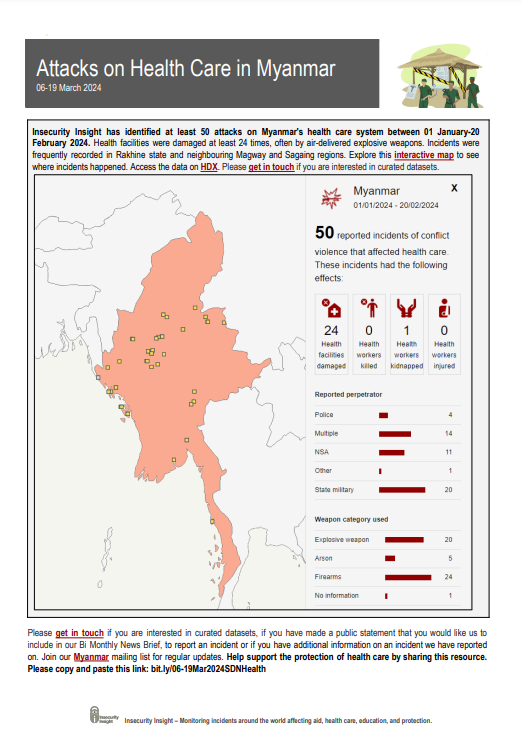
Myanmar
06-19 March 2024
Attacks on Health Care
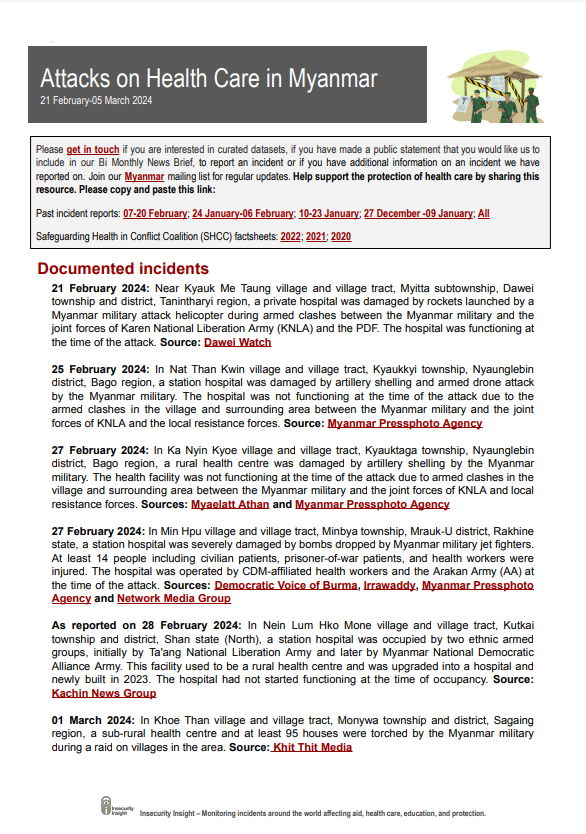
Myanmar
21 February-05 March 2024
Attacks on Health Care
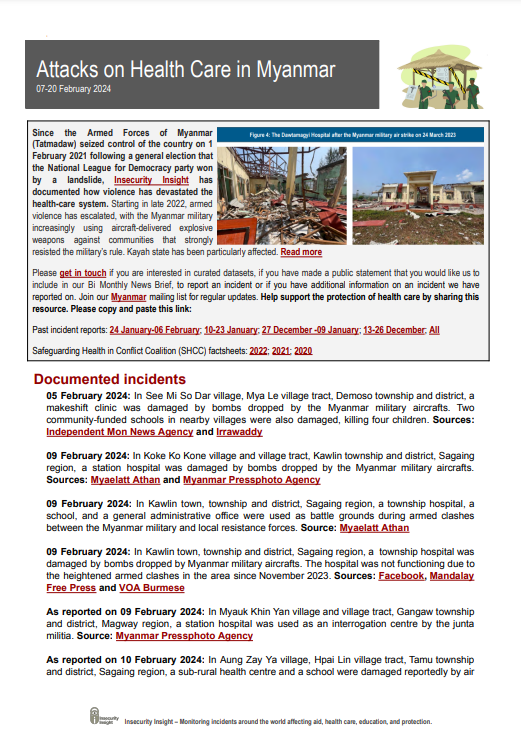
Myanmar
07-20 February 2024
Attacks on Health Care
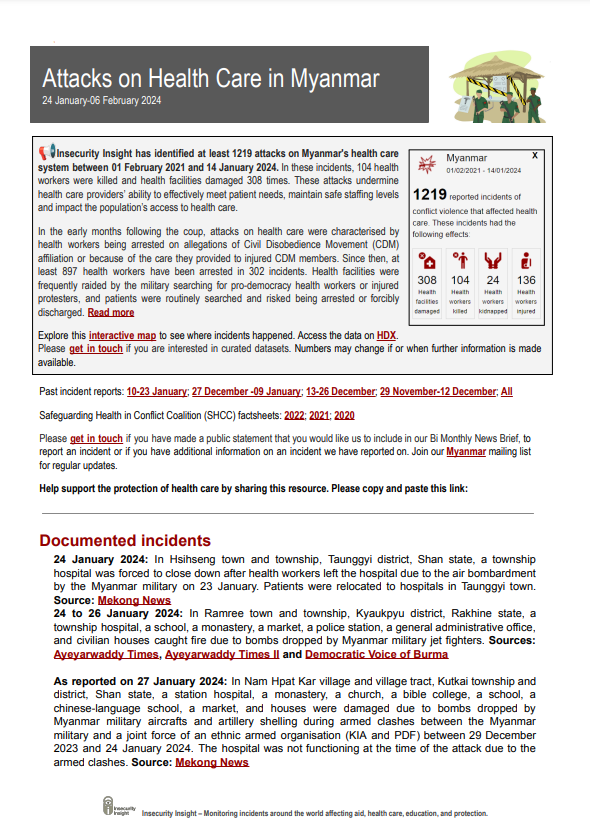
Myanmar
24 January-06 February 2024
Attacks on Health Care
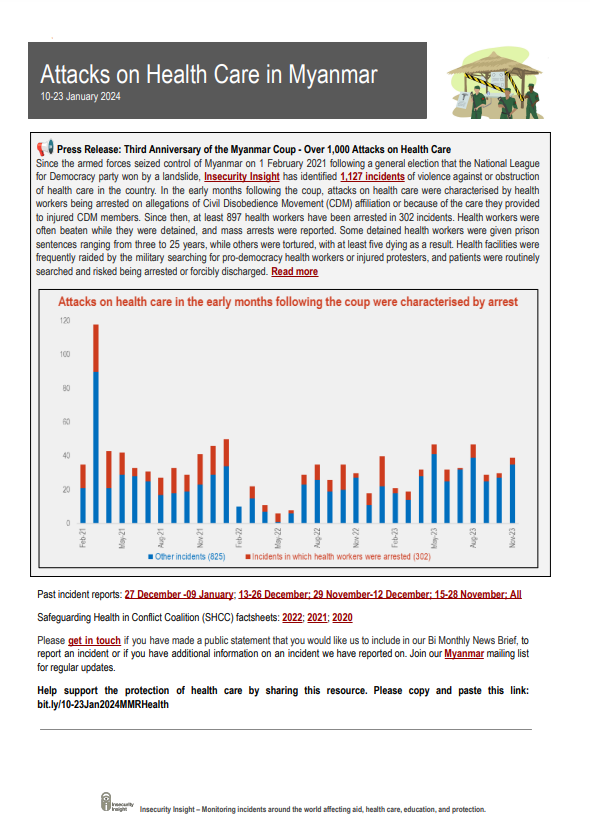
Myanmar
10-23 January 2024

Myanmar
27 December 2023-09 January 2024
Attacks on Health Care
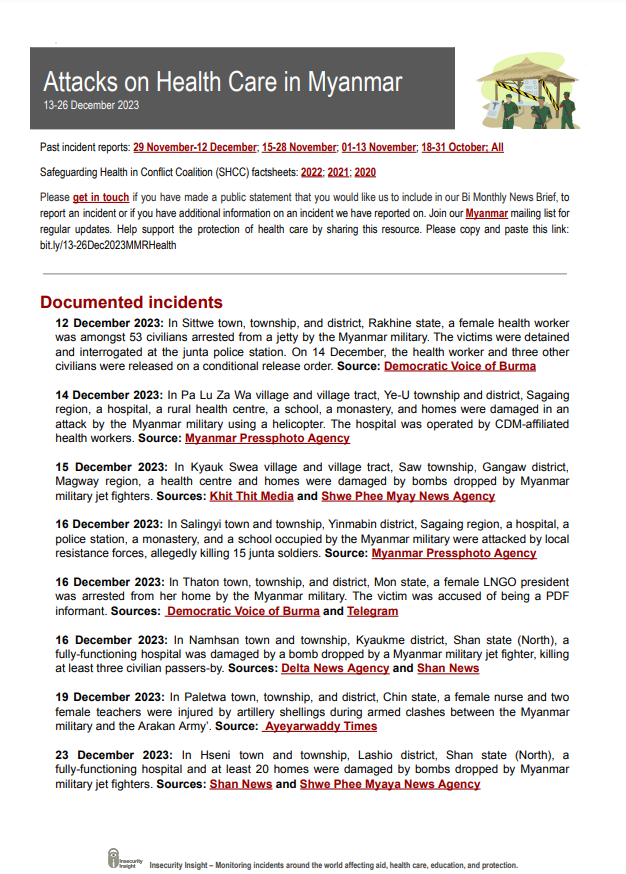
Myanmar
13-26 December 2023
Attacks on Health Care
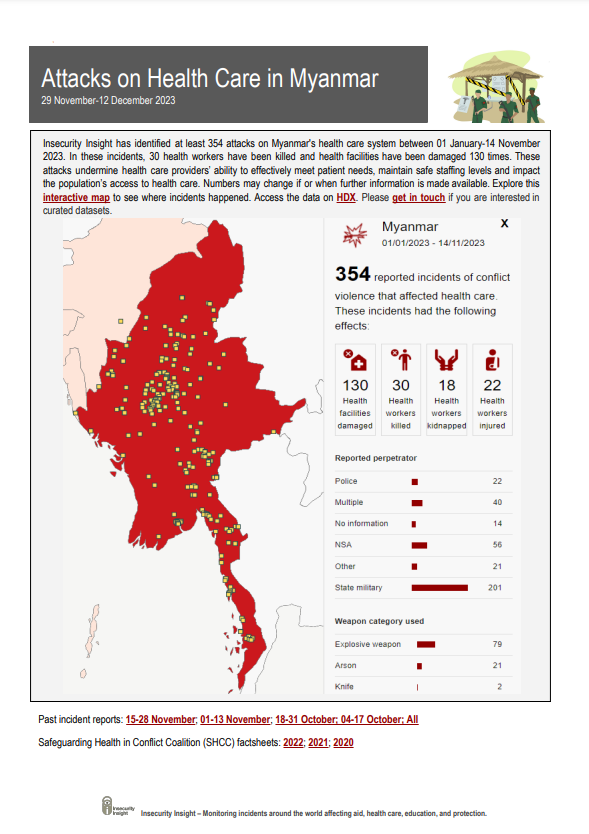
Myanmar
29 November-12 December 2023
Attacks on Health Care
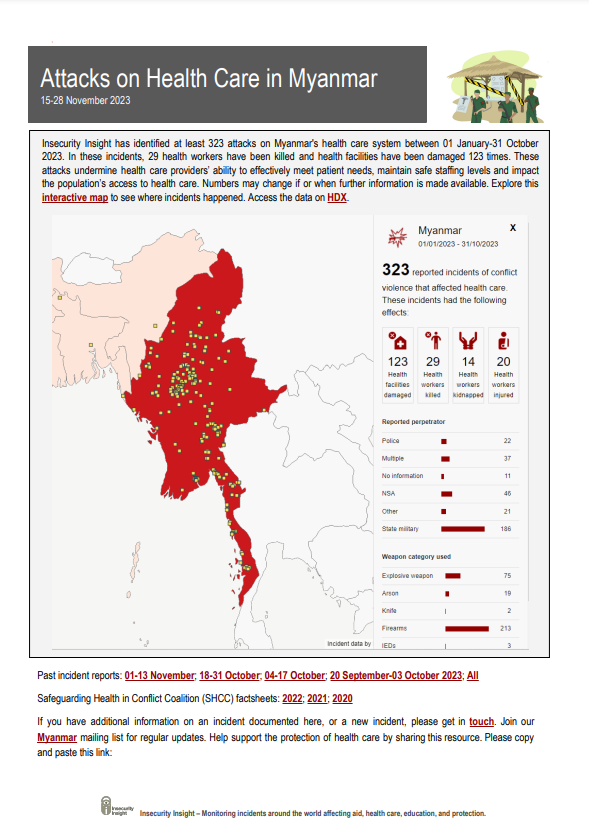
Myanmar
15-28 November 2023
Attacks on Health Care
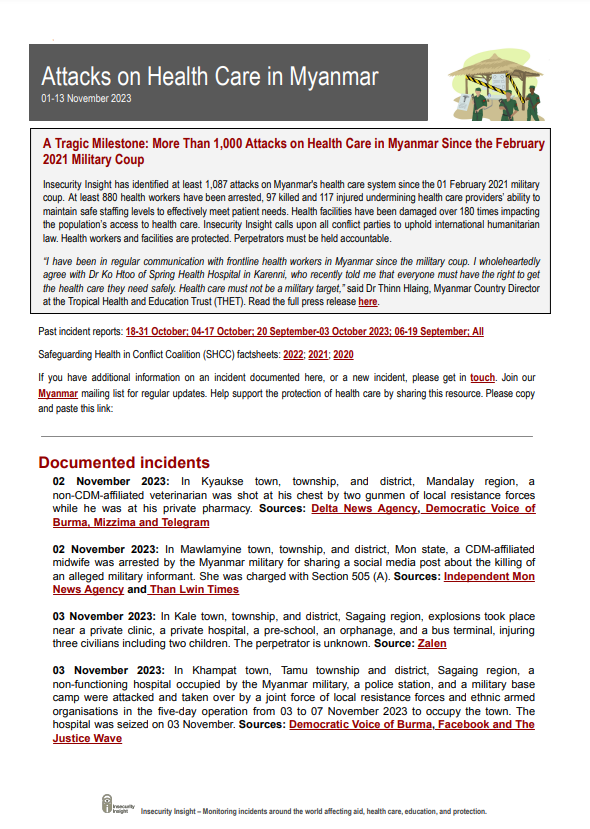
Myanmar
01-14 November 2023
Attacks on Health Care
Aid in Danger
Local non-governmental organisations providing emergency medical assistance and funeral services have been attacked and obstructed from aiding injured protesters. Aid volunteers have been injured, arrested and in some cases shot and killed by military and police forces whilst assisting injured protesters. In Ayeyarwady, Mandalay and Yangon regions volunteer ambulances were shot at and damaged or destroyed whilst responding to injured civilians. LNGO offices were also raided and stored medical supplies looted by military and police forces. Insecurity Insight monitors such violence. Our data is available for download here.
Education
Teachers have been arrested, injured, and shot and killed for their involvement or support of anti-coup protests. A number of schools and universities have also been occupied by military forces.
Throughout the country, students have led many anti-coup protests which has resulted in them becoming a target during violent crackdowns by armed military and police forces. Students have been arrested, injured, and in some instances shot and killed during protests in Ayeyarwady, Bago, Chin, Kachin, Kayah, Magway, Mandalay, Mon, Sagaing, Shan, Tanintharyi and Yangon states. Insecurity Insight monitors such attacks on education. Our data can be downloaded here.